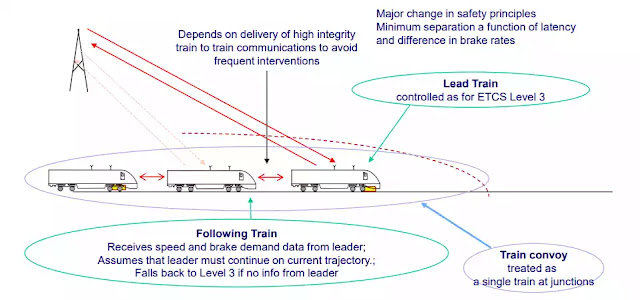More efficient Signalling Systems lead to increase capacity by reducing headway by trains and operating at a higher commercial speed on the same existing line. This is the case of the European Rail Traffic Management System (ERTMS) that the higher its level is, the higher the capacity will be.
Today, two of its 3 defined levels in CCS TSI (Control Command & Signalling - Technical Specifications of Interoperability), ERTMS/ETCS Level 1 and Level 2 who are based on fixed blocks are commercialised and deployed worldwide (Read ERTMS deployment statistics). Nevertheless, the moving-block-based solution, ERTMS/ETCS Level 3 is waiting for further development before it can be considered as a solution ready for deployment such as the above-mentioned 2 levels. To date, the most advanced and realistic type for this level is what's called "ERTMS/ETCS Hybrid Level 3" that is based on existing solutions, and its implantation is awaited in the latter half of the decade in, among other, France and India.
As you may have asked yourself, "What beyond ERTMS Level 3?". In 2016, a paper, "ERTMS Level 4, Train Convoys or Virtual Coupling" was published in IRSE NEWS February 2016, and reissued in May of the same year in the Rail Engineer Magazine.
 |
| Concept of ERTMS L4 |
According to the paper, this concept is described by its supporters under various names 'ERTMS Level 4', 'Train Convey', or 'Virtual Coupling'. The figure above shows the general concept.
- Is the technology feasible?
- Is it safe?
- Does the concept create additional capacity?
1 Comments
Thank you so much, very interesting.
ReplyDeletePost a Comment